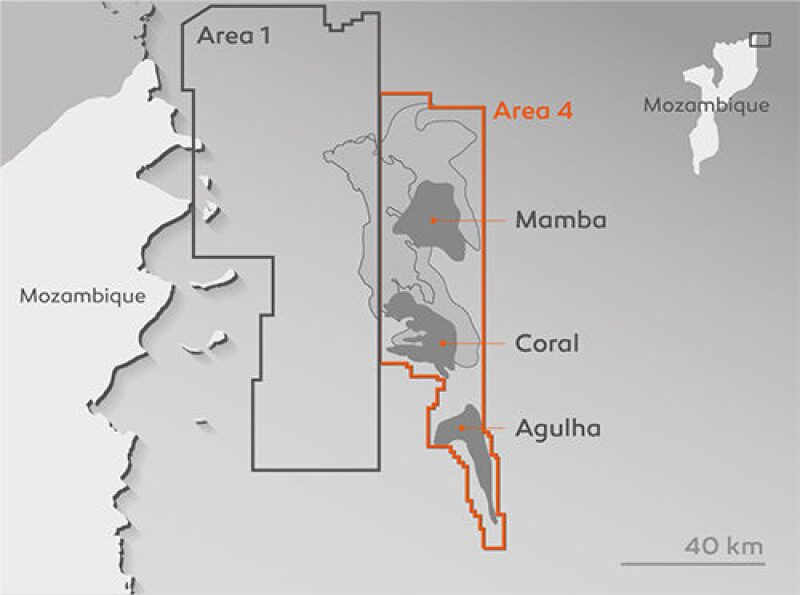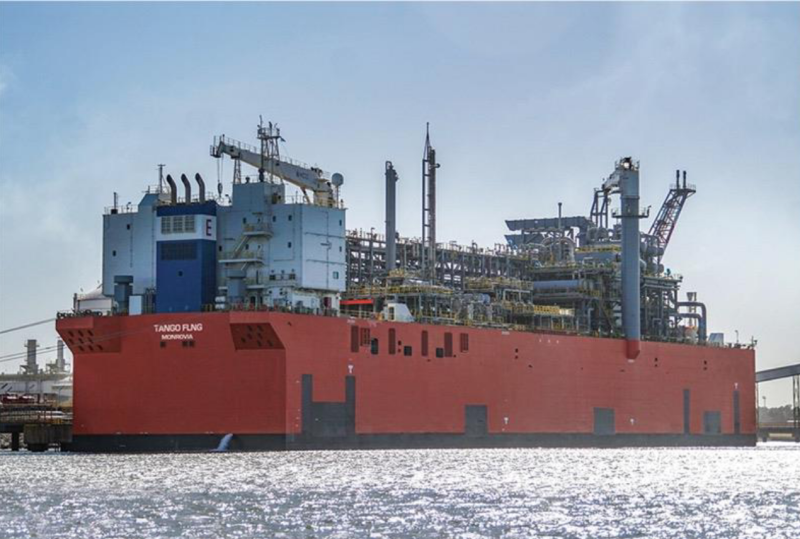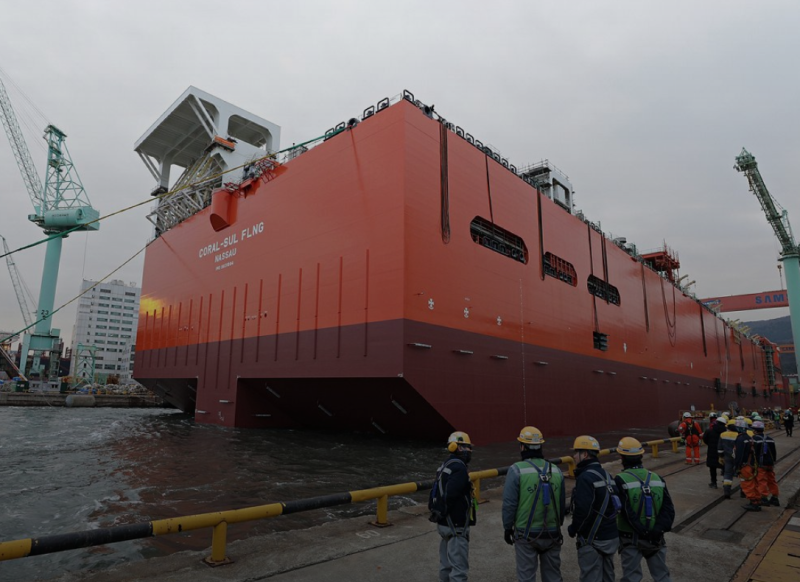Italy’s Eni is aiming to construct a second floating liquefied natural gas (FLNG) processing facility offshore Mozambique to fast-track monetization of the ultradeepwater gas reserves it is developing with its partners ExxonMobil and China National Petroleum Co. (CNPC) in the Mozambique Rovuma Venture SpA (MRV).
No final investment decision (FID) has been made, but Eni CEO Claudio Descalzi told analysts during a 2Q earnings call on 29 July that Eni’s partners “are positive” and view the option as a temporary fix to work around political risk that has stalled ExxonMobil’s movement on the $30-billion onshore LNG facility originally planned.
In late 2020, an Islamic militant insurgency that had been building over 3 years intensified attacks along the Cabo Delgado coast, home to not only ExxonMobil’s Rovuma LNG facility but also TotalEnergies’ $20-billion Mozambique LNG development. The attacks prompted the French major to declare force majeure in late April 2021 and ExxonMobil to postpone its FID to 2022 or even 2023.
FLNG Shelters Export Operations From Onshore Risk
Rovuma isn’t having to wait to produce LNG from its upstream operations in Mozambique’s Area 4 block, however, thanks to the decision in 2017 to construct the $7-billion Coral-Sul FLNG facility which arrived at its mooring site 50 km (31 miles) offshore of the north coast of Mozambique in January. In June it took on its first feedstock from the ultradeepwater Coral South reservoir from connections to six subsea production wells.
Coral-Sul boasts a gas liquefaction capacity of 3.4 mpta and is the first floating LNG facility ever deployed to a deepwater project offshore Africa. It features zero flaring during normal operations, heat-efficient aeroderivative gas turbines for refrigerant compressors and generation, Dry Low NOx technology to reduce NOx emission, and waste heat recovery systems, according to Eni.
Now, the Italian major’s CEO wants a second one.
“We are proposing a possible additional offshore development” … “the same fast LNG that we are developing in Congo,” Descalzi said during his call with financial analysts on 29 July. “… a small size that we can replicate, that can range between 2.5 and 3 million tons per year … that is on the table.”
In April, Eni signed a letter of intent with the Republic of Congo to launch a fast LNG facility in 2023 with a capacity of more than 3 million tons per year (over 4.5 Bcm per year) to transform Congo into a modest gas exporter.
Referencing Mozambique, Descalzi said that given Block 4’s 85 Tcf in reserves, “we are really focused and determined to go through with these developments.”

“The big train, all the engineering, everything has been done,” Descalzi said of ExxonMobil’s work onshore which included the awarding in 2019 of the engineering, procurement, and construction (EPC) contract to a consortium of Japan’s JGC, Fluor, and TechnipFMC. “I think that the question (is whether) we find a reasonable security condition to develop this activity. But if we think about small size, I think that the offshore (option) would … (be the) faster one.”
Eni’s chief operating officer of natural resources, Guido Brusco, told Canada’s BNN Bloomberg in an online interview that a second FLNG plant could be delivered in “less than 4 years,” and this timing offers “a tremendous opportunity window” for Mozambique to sign LNG contracts with Europe at a time the EU is actively diversifying its suppliers.
“I believe that to fully develop Mozambique’s considerable gas resources, the right decision is to move toward both an onshore concept and an offshore concept,” Brusco said, keeping with its original plan to transform one of Africa’s poorest countries into a global energy hub with world-class LNG megaprojects on the Indian Ocean and leveraging the flexibility that offshore liquefaction offers.
However, Brusco added that a quick decision is key, citing increasing demand for floating LNG platforms and as a result, rising prices for the materials used to build them.
Mozambique’s Importance as a Global Energy Hub
In 2020, Mozambique boasted the third-largest natural gas reserves in Africa after Nigeria and Algeria, with its largest gas deposits—and supply source for future LNG exports—located in Area 1 and Area 4 of the Rovuma Basin, according to the US Energy Information Administration.
The MRV joint venture between Eni, ExxonMobil, and CNPC holds a 70% interest in the Area 4 exploration and production concession contract to develop Coral South along with two other world-class gas reservoirs in the Mamba complex. The remaining 30% interest in Area 4 is split equally between Portugal’s Galp, Korea’s KOGAS, and Mozambique’s state-owned ENH (Empresa Nacional de Hidrocarbonetos EP).
Eni is leading the construction and operation of upstream offshore facilities including FLNG on behalf of MRV, while ExxonMobil leads the construction and operation of natural gas liquefaction and related facilities onshore.
Between 2011 and 2014, Eni is credited with making the discoveries in the Coral, Mamba Complex, and Agulha reservoirs with an estimated 2,400 Bcm of gas in place. Eni also holds exploration rights to offshore blocks A5-B, Z5-C, and Z5-D in the Angoche and Zambezi basins.
As for Area 1, Total E&P Mozambique Area 1, a wholly owned subsidiary of Total SE, operates Mozambique LNG with a 26.5% participating interest alongside ENH Rovuma Área Um (15%), Mitsui E&P Mozambique Area 1 (20%), ONGC Videsh Rovuma (10%), Beas Rovuma Energy Mozambique (10%), BPRL Ventures Mozambique (10%), and PTTEP Mozambique Area 1 (8.5%).
Eni Acquires Tango FLNG To Export Congo’s Gas

On 5 August, Eni announced its acquisition of Export LNG Ltd., owners of the Tango FLNG floating liquefaction facility, from the Exmar group, based in Antwerp, as part of the Italian major’s development of Marine XII block in the Republic of Congo.
Built in 2017, the Tango FLNG is expected to begin producing LNG from Marine XII in 2023 and when fully operational will deliver more than 3 mtpa (4.5 Bcm per year). Exmar reported in a separate press statement the sale price at $572 million to $694 million depending on Tango’s first 6-month performance.
The acquisition is part of Eni’s fast-track strategy to enable accelerated production startups to quickly grab LNG market opportunities. The Tango FLNG has a capacity to treat nearly 3 million standard cubic meters per day of gas and an LNG production capacity of nearly 0.6 mtpa (1 billion standard cubic meters per year,) Eni said in its press release.


